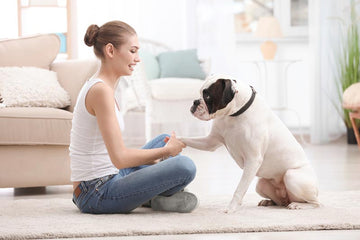Dogs are experts at non-verbal communication. From wagging tails to perked-up ears, they express a wide range of emotions through body language and sounds. One of the most intriguing behaviors they exhibit is sighing. But what does it really mean when your dog lets out a deep sigh?
While humans sigh for various reasons—relief, frustration, or exhaustion—dogs have their own unique motivations behind this behavior. Understanding why your dog sighs can help you better interpret their emotions and strengthen your bond.

1. The Relaxed Sigh: Contentment and Comfort
Most of the time, dogs sigh when they are sleeping or feeling relaxed. If your dog curls up in their favorite spot, takes a deep breath, and exhales slowly, it’s often a sign of pure contentment. This type of sigh is similar to a human letting out a breath after a long, satisfying day.
Dogs that feel safe and secure in their environment frequently sigh as a way to release tension. You might notice this after a long walk, a hearty meal, or during a cozy nap. It’s their way of saying, “Life is good.”
How to Respond?
If your dog sighs in relaxation, there’s no need to do anything—except maybe give them a gentle pat. This is a positive sign that they’re happy and at ease.

2. The Bored or Frustrated Sigh
Not all sighs are happy ones. Sometimes, a dog will sigh out of boredom or mild frustration. If your pup has been waiting for attention, a walk, or playtime, they might let out an exaggerated sigh to express their impatience.
For example, if you’re working at your desk and your dog stares at you before sighing dramatically, they might be saying, “Hey, I’m still here! Pay attention to me!”
How to Respond?
If your dog sighs out of boredom, try engaging them with a quick play session, a puzzle toy, or a short walk. Mental and physical stimulation can help curb restlessness.

3. The Attention-Seeking Sigh
Dogs are smart—they quickly learn what behaviors get their owner’s attention. If sighing has worked in the past (perhaps by making you check on them or offer treats), they may do it intentionally to prompt a reaction.
Some dogs even combine sighing with other attention-grabbing tactics, like pawing at you or making prolonged eye contact.
How to Respond?
If your dog sighs for attention, make sure they’re not in distress. If they’re just being dramatic, reward calm behavior instead of reinforcing the sighing habit.

4. The Emotional Sigh: Stress or Disappointment
While less common, dogs may sigh when they’re stressed or disappointed. For example, if they were expecting a car ride but realize you’re not taking them, they might sigh in resignation. Similarly, a dog that’s anxious or uneasy may sigh as a self-soothing mechanism.
How to Respond?
Observe their body language. If they seem tense (pinned ears, tucked tail), they might need reassurance. Comfort them with gentle words or a distraction like a favorite toy.
Conclusion: Decoding Your Dog’s Sighs
A dog’s sigh can mean many things—relaxation, boredom, a plea for attention, or even mild frustration. By paying attention to the context and their overall behavior, you can better understand what your furry friend is trying to communicate.
Next time your dog sighs, take a moment to observe: Are they curled up in blissful relaxation? Staring at you expectantly? Or expressing a little canine disappointment? Whatever the reason, their sighs are just another way they connect with you.
So, the next time you hear that familiar “huff,” you’ll know exactly what’s on your dog’s mind—and how to respond like the best pet parent possible.





